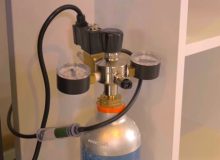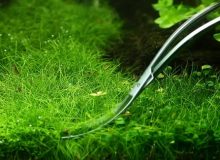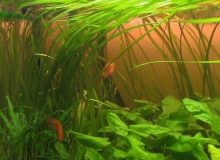Mastering Anubias: Essential Care and Common Disease Treatment
Resilient yet misunderstood, Anubias may look like the perfect “set-it-and-forget-it” aquarium plant — and for the most part, it is. With their broad, leathery leaves and slow-growing nature, Anubias species have earned their place in countless aquascapes. But behind their hardy reputation lies a set of unique care requirements and vulnerabilities that often catch aquarists off guard. Whether it’s black algae creeping across the leaves or rhizome rot from improper planting, even this low-maintenance beauty needs some attention to truly thrive. In this guide, we’ll uncover how to care for Anubias the right way — and what to do when things go wrong.
- Introduction
- Anubias Care Basics
- Common Problems and Diseases
- Tips for Long-Term Success
- Frequently Asked Questions
- Conclusion
Introduction

Anubias is a genus of aquatic and semi-aquatic plants widely cherished in the aquarium trade for their resilience and aesthetic appeal. Native to Africa, these hardy plants thrive in a variety of conditions, making them a favorite among both novice and experienced aquarists.
Their lush, dark green leaves and slow growth rate add a natural elegance to aquariums, while their ability to withstand less-than-ideal conditions makes them forgiving for beginners. Anubias species, such as Anubias barteri and Anubias nana, are particularly popular due to their compact size and versatility in aquascaping.
Proper care and disease prevention are essential to maintaining the health and beauty of Anubias. Despite their durability, these plants are susceptible to issues like algae overgrowth, root rot, and general decline if not cared for correctly. Understanding their specific needs—such as lighting, water parameters, and placement—can prevent common problems and ensure long-term vitality. By learning how to nurture Anubias effectively, aquarists can enjoy vibrant, thriving plants that enhance the aquarium environment.
Anubias Care Basics
1. Lighting

Anubias plants prefer low to moderate lighting conditions, typically in the range of 0.5 to 2 watts per gallon for LED setups or equivalent. Excessive light can promote algae growth on their leaves, which not only detracts from their appearance but can also hinder photosynthesis. To maintain optimal health, position Anubias in shaded areas of the tank or use floating plants to diffuse light. A lighting duration of 6–8 hours per day is recommended to mimic natural conditions while minimizing algae risks.
For aquarists using stronger lighting systems, dimmable LEDs or adjustable light fixtures can help fine-tune intensity. If algae begins to appear, reducing light exposure or adding algae-eating species like shrimp or snails can be effective. Regular monitoring ensures the balance between sufficient light for growth and preventing algae overgrowth, keeping Anubias leaves vibrant and healthy.
2. Water Conditions
Anubias thrives in a stable aquatic environment with specific water parameters. The ideal temperature range is 22–28°C (72–82°F), which suits most tropical aquarium setups. A pH range of 6.0–7.5 is optimal, though Anubias can tolerate slight deviations. Water hardness should be soft to moderately hard (1–10 dKH), as excessively hard water may affect nutrient uptake. Regular water testing is crucial to maintain these conditions and prevent stress to the plant.
Maintaining clean water is equally important, as Anubias can suffer in environments with high organic waste. Weekly water changes of 10–20% help remove nitrates and other pollutants that could encourage algae or weaken the plant. Using a high-quality water conditioner to neutralize chlorine or chloramine during water changes further supports a healthy environment for Anubias growth.
3. Placement & Planting

Proper placement is critical to Anubias health, as their rhizome—the thick, horizontal stem from which roots and leaves grow—must not be buried in the substrate. Burying the rhizome can lead to rot, a common cause of plant decline. Instead, attach Anubias to hard surfaces like rocks, driftwood, or decorations using fishing line, aquarium-safe glue, or plant weights. This method ensures the rhizome remains exposed to water flow and nutrients.
When securing Anubias, ensure the attachment is firm but not damaging to the rhizome. Over time, the plant’s roots will naturally anchor to the surface, creating a stable and natural look. Positioning Anubias in areas with gentle water flow enhances nutrient delivery to the roots while preventing debris accumulation, which could lead to rot or algae issues.
4. Fertilization & CO₂
Anubias is a low-maintenance plant that does not require CO₂ supplementation, making it ideal for low-tech aquarium setups. However, it can benefit from occasional fertilization with liquid micronutrients or root tabs placed near the roots (but not touching the rhizome). These supplements provide essential nutrients like iron and potassium, promoting robust leaf growth and vibrant coloration. Over-fertilization, however, should be avoided, as excess nutrients can fuel algae growth.
 Seachem Flourish Growth Supplement Tabs #ad
Seachem Flourish Growth Supplement Tabs #ad
When dosing fertilizers, follow manufacturer recommendations and monitor the tank for signs of algae. If algae becomes an issue, reduce fertilizer frequency or quantity. For aquarists with CO₂-injected tanks, Anubias will grow slightly faster, but care should be taken to balance CO₂ levels with lighting and nutrients to prevent imbalances that could harm the plant or tank ecosystem.
5. Maintenance
Regular maintenance keeps Anubias healthy and visually appealing. Older leaves that turn yellow or become heavily covered in algae should be carefully trimmed using clean, sharp scissors to encourage new growth. Avoid cutting healthy leaves, as Anubias grows slowly, and excessive pruning can stress the plant. Removing debris from the tank also prevents organic buildup that could smother the rhizome or roots.
When cleaning algae from Anubias leaves, use a soft toothbrush or your fingers under gentle water flow to avoid damaging the delicate leaf tissue. Perform maintenance during routine tank cleaning to minimize disruption to the plant and other tank inhabitants. Consistent care ensures Anubias remains a low-maintenance yet striking addition to any aquarium.
Common Problems and Diseases
1. Algae Growth on Leaves

Algae growth, such as brown diatoms or black beard algae (BBA), is a common issue for Anubias, appearing as stubborn coatings on slow-growing leaves. Symptoms include a fuzzy or slimy layer that dulls the plant’s appearance and may stunt growth. This problem is often caused by excessive lighting, poor water flow, or nutrient imbalances, particularly high levels of nitrates or phosphates. These conditions create an ideal environment for algae to thrive, outcompeting the slow-growing Anubias for resources.
To address algae, reduce lighting intensity or duration to 6–8 hours daily and ensure adequate water circulation to prevent stagnant areas. Introducing algae-eating species, such as Amano shrimp or nerite snails, can help control minor outbreaks. For severe cases, carefully remove heavily affected leaves with clean scissors to prevent further spread. If the tank has a CO₂ system, slightly increasing CO₂ levels can give Anubias a growth advantage over algae, but this must be balanced to avoid stressing other tank inhabitants.
2. Rhizome Rot
Rhizome rot manifests as a soft, blackened, or foul-smelling rhizome, often leading to leaf loss and plant decline. This condition is typically caused by burying the rhizome in the substrate, which restricts oxygen access and promotes bacterial or fungal growth. Poor water quality, such as low oxygen levels or excessive organic waste, can exacerbate the issue, creating an anaerobic environment that accelerates rot.
 Liveek aquarium aquascape tools kit #ad
Liveek aquarium aquascape tools kit #ad
To treat rhizome rot, carefully remove the plant from the tank and inspect the rhizome. Using sterile scissors, cut away any soft or discolored sections until only healthy tissue remains. Reattach the healthy portion to a rock or driftwood, ensuring the rhizome is fully exposed to water flow. Improve tank conditions by increasing aeration, performing regular water changes, and avoiding substrate burial in the future to prevent recurrence.
3. Melting or Yellowing Leaves
Melting or yellowing leaves in Anubias appear as translucent, yellow, or disintegrating foliage, often following environmental stress. This issue is commonly triggered by sudden changes in water parameters, such as when transitioning plants from emersed (grown above water) to submerged conditions, or by deficiencies in micronutrients like iron or potassium. These stressors disrupt the plant’s ability to photosynthesize effectively, leading to leaf loss.
To resolve this, stabilize the tank environment by maintaining consistent temperature, pH, and hardness within the recommended ranges (22–28°C, pH 6.0–7.5, soft to moderate hardness). Supplement with liquid micronutrient fertilizers to address deficiencies, but dose cautiously to avoid algae issues. Patience is key, as Anubias grows slowly and may take weeks to produce new, healthy leaves. Remove severely damaged leaves to redirect energy to new growth, ensuring long-term recovery.
Tips for Long-Term Success

For sustained Anubias health, maintain moderate lighting and gentle water flow while avoiding overly sterile tanks that may lack essential micronutrients. Anubias thrives in balanced ecosystems where trace elements are either naturally present or supplemented.
Select species suited to your tank’s size and aesthetic, such as Anubias barteri for larger setups or Anubias nana petite for compact nano tanks. These choices enhance both functionality and visual appeal, ensuring the plant complements the aquascape.
Regular inspection of leaves and roots is crucial for early detection of issues like algae or rot. Perform monthly checks to trim damaged leaves, clean algae gently, and verify rhizome health. Consistency in water changes, nutrient dosing, and tank maintenance fosters a stable environment, allowing Anubias to thrive for years with minimal effort. By combining these practices with proper placement and care, aquarists can cultivate robust, vibrant Anubias that elevate their aquarium’s beauty.
Frequently Asked Questions
How to Propagate Anubias?
Anubias can be propagated through rhizome division, a straightforward process that creates new plants. Remove the plant from the water, pat it dry, and use clean, sharp scissors or a knife to cut the rhizome into sections, ensuring each piece has at least three leaves and some roots.
Avoid dividing the parent plant into too many small pieces, as this can weaken it and hinder recovery. Secure the cut sections to rocks or driftwood using fishing line, aquarium-safe glue, or rubber bands, then return them to the tank, where they will continue to grow independently.
Proper care post-propagation is essential for success. Ensure the newly divided plants are placed in low to moderate light with good water flow to promote healthy growth. Monitor their progress over weeks, as Anubias grows slowly, and avoid disturbing the rhizome to prevent stress. This method allows aquarists to expand their Anubias collection or share plants with others while maintaining the health of the parent plant.
Can Anubias Grow Out of Water?

Anubias is highly adaptable and can grow submerged, emersed, or even fully out of water, provided it has time to acclimate to its new environment. For out-of-water growth, the roots should be anchored in a moist substrate, such as sphagnum moss or a nutrient-rich soil mix, while keeping the rhizome exposed to air to prevent rot. High humidity is critical to prevent the leaves from drying out, making terrariums or paludariums ideal settings for emersed growth.
When transitioning Anubias to out-of-water conditions, do so gradually to avoid stress. For example, start with emersed growth in a humid aquarium before moving to a fully terrestrial setup. Regular misting or a humidifier can help maintain moisture levels. With proper care, Anubias can thrive outside water, offering versatility for aquarists and plant enthusiasts looking to create unique displays.
How to Grow Anubias Fast?
Anubias is naturally a slow-growing plant, typically producing only a few leaves per year, but certain conditions can accelerate its growth. Using a nutrient-rich substrate or adding liquid fertilizers with micronutrients like iron and potassium can enhance growth rates.
Additionally, introducing a small amount of CO₂, either through a CO₂ injection system or naturally from fish respiration, supports photosynthesis and encourages faster leaf development. Maintaining optimal water parameters (22–28°C, pH 6.0–7.5) and moderate lighting also contributes to healthier, quicker growth.
However, care must be taken to balance these enhancements. Excessive nutrients or CO₂ can lead to algae issues, which can harm Anubias. High light combined with high CO₂ may boost growth more than medium light with high CO₂, but it requires careful monitoring to avoid imbalances. By fine-tuning these factors, aquarists can achieve noticeably faster growth while keeping the plant healthy.
Does Anubias Need CO₂?
Anubias is a low-maintenance plant that thrives without supplemental CO₂, making it ideal for low-tech aquariums. The CO₂ naturally produced by fish and microbial activity in the tank is typically sufficient for its slow growth rate. This resilience makes Anubias a great choice for beginners or setups without advanced equipment, as it can maintain healthy growth under minimal conditions.
That said, Anubias can benefit from additional CO₂ in high-light environments, where it may grow faster and produce more robust leaves. In such cases, a balanced CO₂ injection system (typically 10–20 ppm) can enhance growth, but it’s not essential. Overdosing CO₂ can disrupt tank chemistry and harm fish or other plants, so careful monitoring is necessary if supplementation is used.
How to Attach Anubias to Rock?

Attaching Anubias to a rock is a simple process that enhances its aesthetic and functional placement in the aquarium. Remove the plant from the water, pat it dry, and select a healthy section of the rhizome. Secure it to the rock using fishing line, a rubber band, or aquarium-safe superglue.
For glue, apply a small amount to the rhizome, press it against the rock, and hold for a few seconds to set. If using thread or bands, tie loosely to avoid damaging the rhizome, then return the plant to the tank. Over time, the roots will naturally anchor to the rock.
Ensure the rhizome remains exposed and not buried in substrate to prevent rot. Choose a rock with a rough texture for better root adhesion and place it in an area with gentle water flow to promote nutrient uptake. This method creates a natural, secure setup that highlights Anubias’ beauty while ensuring its long-term health.
Can Anubias Grow in Sand?
Anubias should not have its rhizome buried in sand or any substrate, as this can lead to rot and plant decline. Instead, attach the rhizome to a rock or driftwood using fishing line, glue, or rubber bands, then place the rock on the sand substrate. This setup allows the roots to grow downward into the sand for nutrient access while keeping the rhizome exposed to water flow and oxygen.
If sand is the primary substrate, ensure it is not too compact, as loose sand allows better root penetration. Supplementing with liquid fertilizers can compensate for sand’s typically low nutrient content. By securing Anubias above the sand and maintaining proper care, aquarists can successfully incorporate it into sand-based aquascapes without risking rhizome health.
How to Trim Anubias?
Trimming Anubias is minimal due to its slow growth, but occasional pruning maintains its appearance and health. For overgrown roots, use a clean, sharp knife to trim them to a desired length, ensuring a neat look without harming the plant. For leaves, gently remove older, yellowing, or algae-covered ones by pulling them off at the base or cutting close to the rhizome with sterile scissors. This encourages new leaf growth over time.
In cases of older or overcrowded plants, the stem can be trimmed about two inches from the rhizome to control size or propagate new plants. Avoid excessive trimming, as Anubias grows slowly and may take weeks to recover. Perform trimming during routine maintenance to minimize stress, and always use clean tools to prevent introducing pathogens.
Conclusion
Anubias is a resilient and visually striking plant that thrives with minimal care, but attention to detail is key to maximizing its beauty and longevity. Regular monitoring for issues like algae, rhizome rot, or yellowing leaves, combined with proper lighting, water conditions, and placement, ensures Anubias remains a vibrant centerpiece in any aquarium. By addressing problems early and following best practices, aquarists can prevent diseases and maintain healthy plants with ease.
The mantra “less is more” applies perfectly to Anubias care. Avoid overcomplicating its environment with excessive light, nutrients, or CO₂, and focus on simplicity and consistency. With patience, Anubias will reward you with enduring beauty, serving as a long-lasting focal point in your aquatic setup. Embrace its slow growth and adaptability to create a thriving, low-maintenance aquascape.

 Seachem Flourish Glue #ad
Seachem Flourish Glue #ad





Leave a Reply